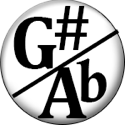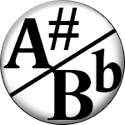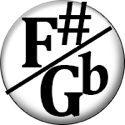Voice Leading Cycles 3 and 6

Hi. This is Hub Guitar.
We're going to talk about voice leading using cycles 3 and 6. This is a chord progression where the root of the chords move in either 3rds or 6ths. This concept is great for organizing and practicing chords. For example, in C major, we would start on the first chord, C maj7, and then move up to the third chord, E min7. Then to G7, Bmin7b5, and so on.
We're going to voice lead these using drop 2 chords on the middle four strings, starting with C major in the root position.
Just as a note here if you voice lead these only one note is changing between one chord and the next. So here is the example. Notice that only one note changes from one chord to the next. That is smooth voice leading. For that reason, these cycles are great for practicing voice leading.
Of course, you can also do this with any other type of chord voicing, including triads, drop 3 chords, and also starting from any inversion. So that leaves a lot to practice. Learn these patterns, and apply them to your playing.
In chord progressions, a cycle is simpler than it sounds. It happens when the root of the progression moves by the same interval until the root repeats. Check our lesson on chord progression cycles if you’re not sure what this means.
Cycle 3 & 6
Cycle 3
| Cmaj7 | E-7 | G7 | B-7♭5 | D-7 | Fmaj7 | A-7 |
Cycle 6 – (Cycle 3 Backwards)
| Cmaj7 | A-7 | Fmaj7 | D-7 | B-7♭5 | B-7♭5 | G7 | E-7 |
The Progression
Cmaj7, root position
E-7, 3rd inversion
G7, 2nd inversion
B-7♭5, 1st inversion
D-7, root position
Fmaj7, 3rd inversion
A-7, 2nd inversion
Gmaj7, 1st inversion
Key Exercises
- Learn, memorize, and apply the chord progression.
- Practice Cycle 6, which is the above example played in reverse.
- Start the cycle again, this time from the last Cmaj7 chord instead of the first chord. Since this is a different inversion than the original starting Cmaj7, the entire chord progression will be different. Can you figure out how to walk through the chord progression by moving two notes up at a time?
 As the creator of Hub Guitar, Grey has compiled hundreds of guitar lessons, written several books, and filmed hundreds of video lessons. He teaches private lessons in his Boston studio, as well as via video chat through TakeLessons.
As the creator of Hub Guitar, Grey has compiled hundreds of guitar lessons, written several books, and filmed hundreds of video lessons. He teaches private lessons in his Boston studio, as well as via video chat through TakeLessons.











